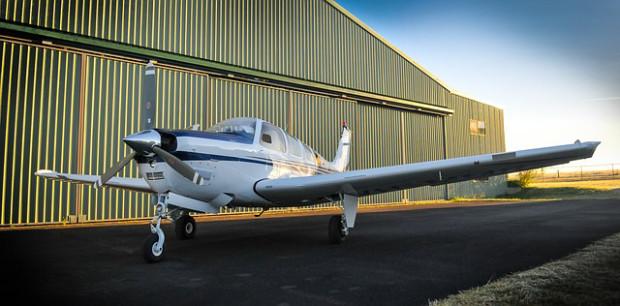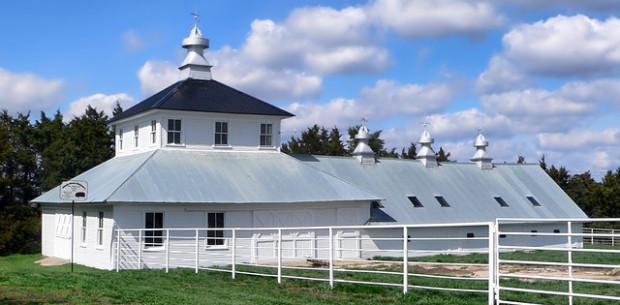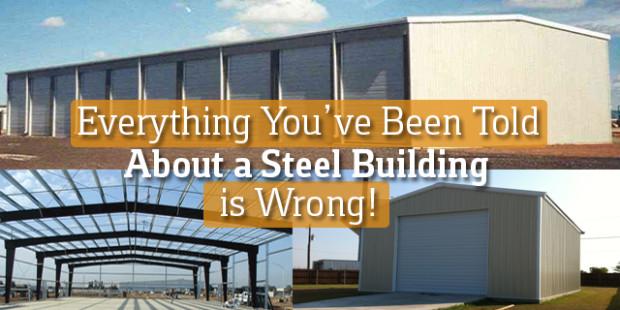How to Plan for the Perfect Steel Airplane Hangar

Whether flying is a hobby or your business, you’ll need a place for your Cessna, Piper, or jet aircraft to call home. Nowadays, steel is the industry standard for airplane hangars across the country. In fact, a report from the U.S. Department of Defense says that “the superstructure of the hangar bay shall be a steel frame.” Not wood. Not brick and mortar. Steel. While I might not agree with everything the government decides, they seem to be spot on here. If the best and brightest aviation experts think a steel airplane hangar can adequately protect investments and equipment worth millions of dollars, as well as the people they house, I think it’ll be good enough for your aircraft hangar.
 So now that we’ve settled on a steel airplane hangar, let’s start planning to get one on your property. Where do you begin? First, you should pick the location of your hangar. Check with your local municipality for building and zoning laws in your area. A steel airplane hangar can be customized to your unique specifications, but depending on the location of your site, you might run into problems if you don’t do your research first. Airplane engines can also be noisy, and you’ll have to account for those noise protocols and ordinances in your city as well. But not only that, you’ll possibly need to satisfy economic, environmental, functional, visual, and safety requirements for the hangar itself. Once you have selected your ideal location, you can speak with a building consultant to determine your dimensions.
So now that we’ve settled on a steel airplane hangar, let’s start planning to get one on your property. Where do you begin? First, you should pick the location of your hangar. Check with your local municipality for building and zoning laws in your area. A steel airplane hangar can be customized to your unique specifications, but depending on the location of your site, you might run into problems if you don’t do your research first. Airplane engines can also be noisy, and you’ll have to account for those noise protocols and ordinances in your city as well. But not only that, you’ll possibly need to satisfy economic, environmental, functional, visual, and safety requirements for the hangar itself. Once you have selected your ideal location, you can speak with a building consultant to determine your dimensions.
When it comes to dimensions, we arrive at the next logical question. How big is your aircraft? Design the perfect steel airplane hangar to accommodate all your aircraft, and make sure they can move in and out of the hangar with ease. The number and type of aircraft can determine the dimensions of the whole hangar. But don’t just plan for your aircraft needs. You’ll want to account for the spatial requirements of a shop. You’ll be performing routine maintenance on one or several airplanes, right? Generally, as long as you have a large open area, you’ll satisfy most building requirements. Some hangars also contain offices or bathrooms, so if you want to include those alternate rooms, plan for the space now.
You might think a steel airplane hangar is just a big garage for your aircraft. But it’s much more than that. It will house one of your most prized possessions. Make sure the building eliminates condensation with some sort of insulation. You also might want to seek out some sort of climate control to aid in the longevity of your aircraft. If constantly exposed to the elements, your flying investments are more than likely to break down or require continuous maintenance.
While the dimensions of the building are one of the most important aspects of your hangar, the defining feature will be the hangar doors. Most steel airplane hangars have large doors, and they types range from simple to complex. Factors such as building requirements, operating systems, and security will influence your selection.
Bi-Folding doors
 These hangar doors are horizontally split down the middle, and fold in half when activated. The bi-fold door can be a canopy when fully open. They are typically powered by electric motors and lift cables or straps.
These hangar doors are horizontally split down the middle, and fold in half when activated. The bi-fold door can be a canopy when fully open. They are typically powered by electric motors and lift cables or straps.
Vertical lift doors
These are your standard doors, much like a regular garage door. These dual track doors are raised overhead and opened by pulling the top of the door back towards the rear of the hangar. If there is enough vertical space in the hangar, some doors pull up straight up to the ceiling.
Sliding doors
 These are steel airplane hangar doors that usually follow a track, and slide from side to side. There is a wide array of options associated with this type of door. You can get a bi-parting system, which is two pieces that open and close, much like an elevator, or a unidirectional door system. Instead of the door sections opening to each side like the bi-parting system, the unidirectional hangar door system opens in just one direction, either to the left or to the right. The several door sections are controlled by an electric motor drive system that is mounted on the leading door section, or can be hand operated.
These are steel airplane hangar doors that usually follow a track, and slide from side to side. There is a wide array of options associated with this type of door. You can get a bi-parting system, which is two pieces that open and close, much like an elevator, or a unidirectional door system. Instead of the door sections opening to each side like the bi-parting system, the unidirectional hangar door system opens in just one direction, either to the left or to the right. The several door sections are controlled by an electric motor drive system that is mounted on the leading door section, or can be hand operated.
Finally, you, or a foundation engineer, will plot a foundation plan just like any steel building. You can select which type of foundation is right for you, whether it be a pier foundation system or a concrete slab. Just be sure not to make any mistakes when it comes to pouring your concrete.
Now you have a building plan, you’ve accounted for your aircraft, and you have a choice of hangar doors. Ask your steel building provider what your options are for the rest of your perfect steel airplane hangar.
Photo courtesy: stokpic, Matthew Nichols, Aerocardal Chile, SuperJet International
« The Ultimate Guide to Understanding Your Steel Building Quote
How a New Youth Center Will Help Your Church Grow »
Popular Posts

Are you dreaming of the perfect steel barn? You don’t have to dream any longer. First, what are the characteristics of the perfect barn? To me, a barn should be cool in the summer, and warm in the winter. It should house all your animals or store your farm equipment and keep things safe and… …

You can’t have your cake and eat it too. This idiom has been repeated so much, it’s become completely cliché. More than likely, someone has uttered this phrase to you at some point in your life. But what does it mean exactly? Other than getting me in the mood for dessert, this really illustrates the… …

